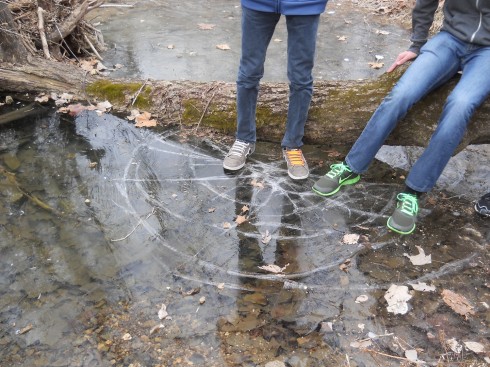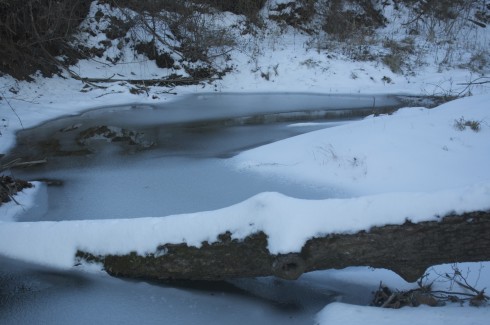
In January, the creek froze over after a few days of below zero (Celcius) temperatures. However, we’d missed the snow that usually accompanies a drop in temperature (it had hit to the south of us), so the ice froze clear and firm. Since they’re used to seeing the whiter ice — on lakes and ice rinks, for example — my students wondered why the ice was so clear.
In February, we got both the snow and cold, which incorporated air bubbles into the ice, resulting in a very different, cloudier ice.

It was quite neat to see the contrast, and made me wonder about the ecological impact. After all, clear ice lets sunlight through much more efficiently than cloudy ice.